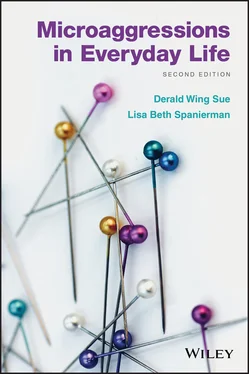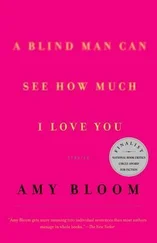Former world champion boxer Manny Pacquiao, during a successful run for senate in the Philippines, claimed that gay and lesbian individuals are “worse than animals … It's just common sense. Do you see any animals of the same sex mating?” Drawing on his Christian faith and the Bible, he remarked that same‐sex behavior is “detestable” and confirmed he was speaking his true feelings. Nike swiftly cut all ties with Pacquiao, terminating his contract.
In 2016, the media released a recorded conversation from 2005 with television personality Billy Bush and Donald J. Trump, in which Trump made lewd remarks about women: “I better use some Tic Tacs just in case I start kissing her … I just start kissing them. It's like a magnet. Just kiss. I don't even wait. And, when you're a star, they let you do it. You can do anything … Grab’em by the pussy. You can do anything.” When called out by Anderson Cooper during a presidential debate, Trump apologized and said this was “locker room talk,” implying that all men speak this way behind closed doors. Actor Scott Baio jumped to Trump's defense: “I like Trump because Trump is not a politician. He talks like a guy. And, ladies out there this is what guys talk about when you are not around. So if you are offended by it, ‘Grow up!’ … This is the way the world works.”
Do Examples 2.1 to 2.4 indicate that Maher and Barr are racists, Pacquiao is heterosexist (antigay), and Trump and Baio are sexist? Do these public figures recognize their use of blatantly inflammatory language? These outbursts were roundly condemned by the public, and a debate ensued over whether their language was a true reflection of personal bigotry; in Example 2.1blamed it on the “banter of a live moment,”. In Example 2.2Barr explained that she was on a sedative and just being an “idiot,” in Example 2.3Pacquiao justified it on his literal interpretation of Leviticus in the Bible, and in Example 2.4and Baio both explained it away as men's “locker room talk.”
Are these individuals bigots, skilled in disguising their biases (Apfelbaum, Sommers, & Norton, 2008), or are they generally decent people unaware of the racism, heterosexism, and misogyny they harbor until they lost control (Conley, Calhoun, Evett, & Devine, 2001; D. W. Sue, Lin, Torino, Capodilupo, & Rivera, 2009)? More important, are any of us capable of such outbursts? Have we ourselves ever lost control and used racial epithets? What about telling or laughing at racist, heterosexist, or misogynistic jokes? If so, does it make us bigots?
Scholars suggest that it is nearly impossible for any of us not to inherit the racial, gender, and sexual‐orientation biases of our forebears (Baker & Fishbein, 1998; Banaji & Greenwald, 1995; Barret & Logan, 2002; Dovidio, Gaertner, Kawakami, & Hodson, 2002; Feagin, 2013; Fiske & Stevens, 1993; D. W. Sue, 2003). Such prejudices, however, may exist consciously, unconsciously, or on the margins of consciousness (Nelson, 2006; Ponterotto, Utsey, & Pedersen, 2006; D. W. Sue, 2003). One could make a strong argument, for example, that Maher, Barr, Pacquiao, Trump, and Baio (a) are aware of their biases but are generally successful in concealing them, (b) are only minimally aware, or (c) are completely unaware until their outbursts. To understand racism means to realize that our prejudices, stereotypes, and biases exist on a continuum of conscious awareness (Trepagnier, 2010). The avowed racist, for example, will use racial epithets freely, will consciously believe in the inferiority of persons of color, and will deliberately discriminate. Those who are less aware, however, are likely to unintentionally behave in subtle discriminatory patterns against people of color, women, and LGBTQ individuals outside their level of conscious awareness.
Conscious and Deliberate Bigotry versus Unconscious and Unintentional Bias
People who are aware of their racial, gender, and sexual‐orientation biases, who believe in the inferiority of certain groups, and who discriminate when the opportunity arises have been labeled conscious‐deliberate bigots (D. W. Sue, 2003). In the area of racism, for example, they vary from people who privately harbor racial animosity but do a good job of concealing it, to those who are more overt in expressing their biases, and finally to those who might be labeled White supremacists. In most cases, conscious‐deliberate bigots are held in check by legal, moral, and social constraints. These individuals form a small number, although they have great public impact. In an August 2017 Marist Poll, researchers found that only a small proportion of Americans “mostly agree” with beliefs of the alt‐right (6%), White nationalists (4%), the White supremacy movement (4%), and the Ku Klux Klan (2%). During the same month, White nationalists organized a rally to “Unite the Right” in Charlottesville, Virginia. Several hundred people from various White supremacist groups wielded tiki torches during an evening march to protest the city's plan to remove Confederate statues. Notably, a far greater number of counterprotestors (estimates of 2,000–8,000) showed up for the main event the following day to express their opposition to fascism and White supremacy. There were physical altercations, and, regrettably, someone was murdered. White supremacist James Alex Fields Jr. drove his car into the crowd, killing a racial justice counterprotester, 32‐year‐old Heather Heyer, and injuring 35 others, according to reports. In his response to the events, President Trump condemned “hatred, bigotry, and violence on many sides,” further emboldening the small number of White supremacists in America.
Many multicultural scholars believe it is easier for people of color, sexual minorities, and women to deal with overt and deliberate forms of bigotry than with subtle and unintentional forms, because no guesswork is involved (Dovidio & Gaertner, 2000; Hebl, Foster, Mannix, & Dovidio, 2002; Salvatore & Shelton, 2007; D. W. Sue, 2003; Swim & Cohen, 1997). Subtle and unintentional forms of discrimination may be more harmful for targets because subtle discrimination is more frequent than overt forms, thus presenting as a chronic stressor (Jones, Peddie, Gilrane, King, & Gray, 2016). It is the unconscious and unintentional forms of bias that create the overwhelming problems for members of members of marginalized groups in our society (D. W. Sue, 2003, 2005).
The Changing Face of Racism, Sexism, and Heterosexism
Bias, prejudice, and discrimination in North America have undergone a transformation, especially in the post–Civil Rights era when the democratic belief in the equality of marginalized groups (e.g., people of color, White women, and LGBTQ individuals) directly clashes with their long history of oppression in society (Dovidio & Gaertner, 2000; Satcher & Leggett, 2007; Swim, Mallett, & Stangor, 2004). Some scholars refer to color‐blind racism as the dominant racial ideology of the post–Civil Rights era (Neville, Awad, Brooks, Flores, & Bluemel, 2013). The term “color‐blind racial ideology” refers to the belief that race and racism do not matter in society. Color‐blind racism and other subtle and unconscious forms of prejudice have been linked to discriminatory behaviors. More specifically, implicit racial bias has been linked to jury decisions (Lynch & Haney, 2011), police shootings of unarmed Black civilians (Nix, Campbell, Byers, & Alpert, 2015), and physician interactions with patients (Penner, Phelan, Earnshaw, Albrecht, & Dovidio, 2017). Research also indicates that sexism and heterosexism have not decreased but instead have become more ambiguous, making them more difficult to identify and acknowledge (Hylton, 2005; Morrison & Morrison, 2003; Swim & Cohen, 1997). One study, for example, documented that benevolent sexism attitudes were more commonly endorsed than hostile sexism attitudes among male science, technology, engineering, and mathematics (STEM) students; and, accordingly, female STEM students perceived more frequent experiences of benevolent compared to hostile forms of sexism (Kuchynka et al., 2018).
Читать дальше












